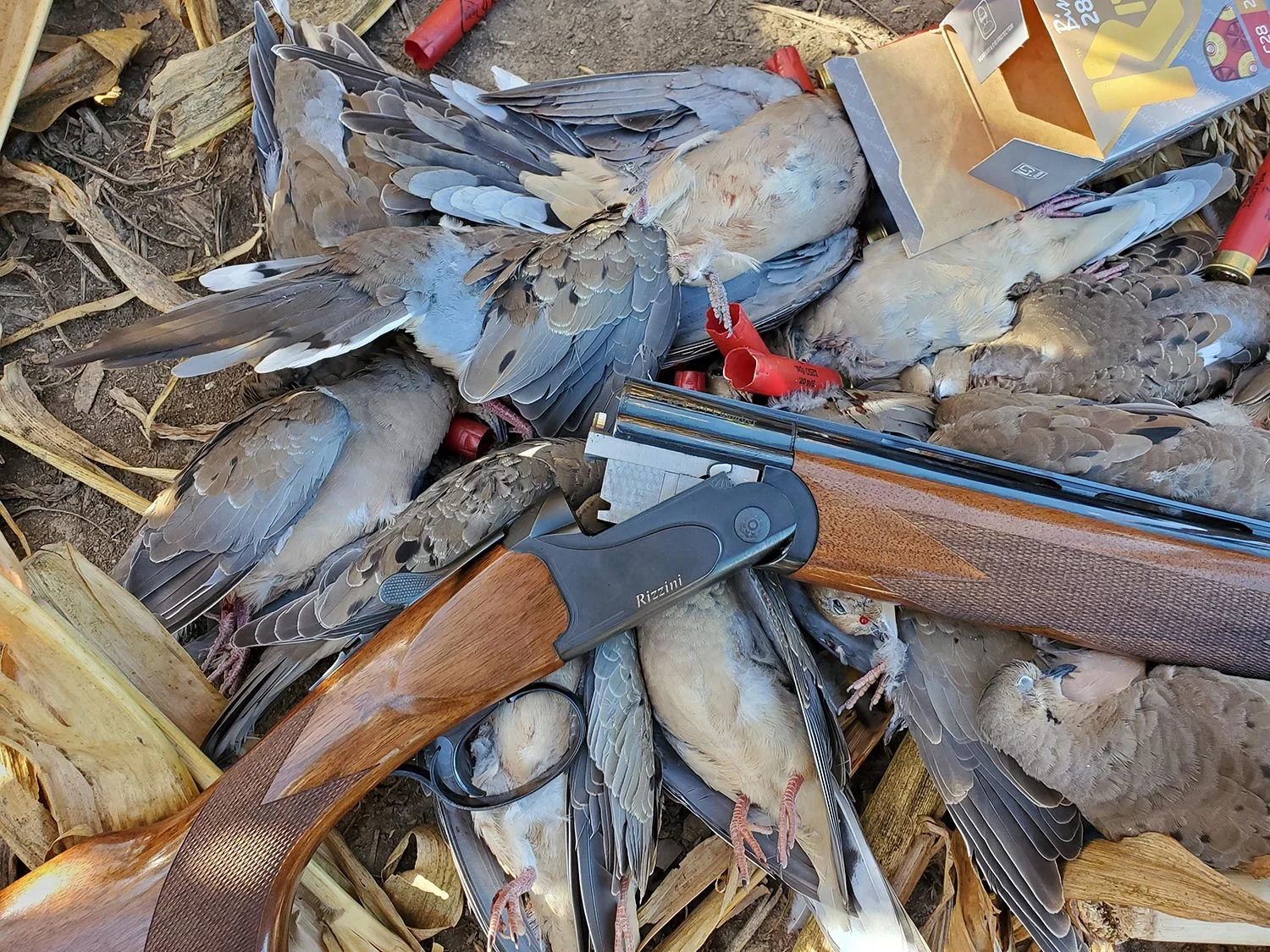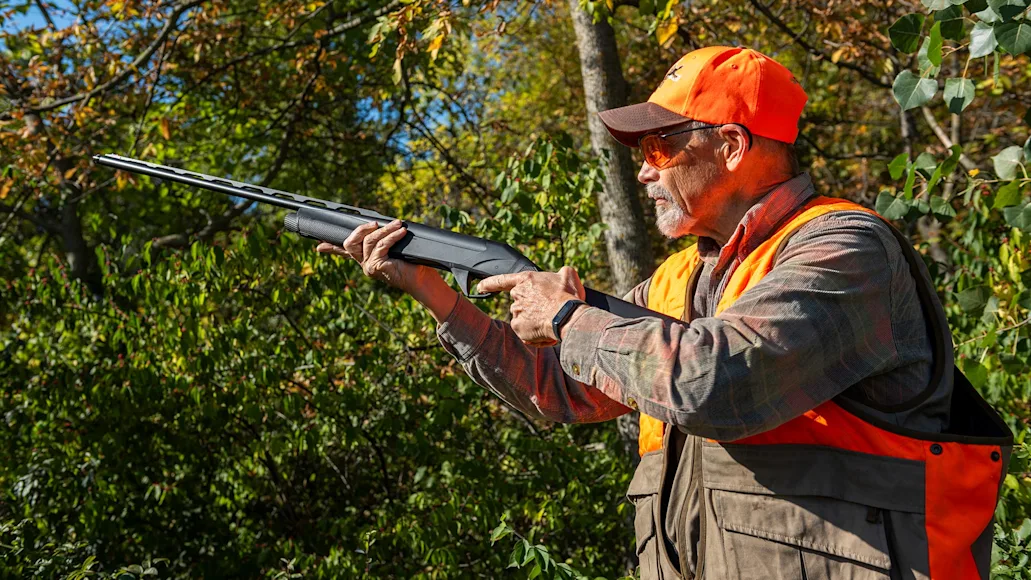_We may earn revenue from the products available on this page and participate in affiliate programs. Learn more ›
_
HUNTING IS HARDER when you have the attention span of a gnat. Since nothing had happened for a while, I decided to call a friend just before the dove came in from behind. Zipping over my head at cornstalk height and then flying straight away, the bird deserved to escape an inattentive hunter. It didn’t. I raised the 5¾-pound Rizzini 28-gauge to my shoulder with my one free hand and, somewhat to my surprise, folded the bird.
“I got it!” I said into the phone and ended the call to make the retrieve.
Could I have made that shot with a heavier gun? Maybe. But I think it’s safe to add “you can sometimes shoot it one-handed” to the very short list of practical advantages a lightweight gun affords in the field.
Otherwise, the list reads:
1.Lightweight guns are easy to carry.
And that’s the end of the list.
Light on Performance
In every other aspect of shotgunning, light guns punch below their weight. And yet we love and buy them. Picking up a featherweight gun puts a smile on your face, and that goes a long way toward explaining the trend toward sub-gauges in general and the current 28-gauge craze in particular. It may also help us understand the mysterious slimming down that afflicts modern waterfowl guns, which weigh less every year, even though hardly anyone carries a duck gun anywhere.
Given all the hype about lightweight, sub-gauge shotguns lately, you may want one of your own. Who am I to say you shouldn’t have it? But before you buy, let me at least help adjust your expectations.

The author’s 28-gauge Rizzini over/under worked well for close-range decoying doves. But when the shots got tougher, he switched to a heavier 12-gauge. Phil Bourjaily
That wispy 28-gauge Rizzini I mentioned earlier, for example, is a great gun for doves over decoys. It’s fun to shoot. Its slender lines make me happy whenever I take it out of the case. Clearly, I’m not immune to the charms of a lightweight gun myself. But a few days after that one-handed shot, my light 28 ran out of magic. The wind was blowing, the shots were long and crossing, and my previously deadly dove gun swung like a drinking straw.
On my next hunt, I left it at home in favor of a much heavier 12-gauge o/u. With an extra pound and a half of gun weight in my hands, all I had to do was look at a dove and it fell from the sky. Heavy guns are smoother and easier to swing, period.
Not So Fast
It seems only logical that the lighter the gun, the faster you can mount it and fire. That turns out not to be true. A few years ago, I conducted a test with a pair of Remington 870s, one 20-gauge and one 12. Four different shooters took turns shooting straightaway targets from a low-gun start. We shot the 20, then the 12, then the same 12 with a pound of weight added. We timed shooters with a stopwatch and recorded hit percentages. The heavier the gun, the faster everyone could get it on target, and the greater the percentage of hits they could score. People call light guns “whippy,” but that term doesn’t describe them. They are flighty, refusing to settle on a target the way a heavier gun will.
And, of course, the lighter the gun, the harder it kicks. This is physics and not up for debate or review. The trend to ever-lighter waterfowl guns especially confuses me because, unless you’re jump-shooting, if you carry the gun at all, it will be slung over your shoulder. More likely, your gun will be carried for you by a truck, a boat, or an ATV, which will not complain about the weight.
Many claim not to feel the recoil of a light duck gun during the excitement of shooting in the field. But extra recoil can still impede good shooting. I had a very lightweight (under 7 pounds, which is not uncommon anymore) 3½-inch 12-gauge inertia semiauto with which we set up a test on the old Gun Nuts TV show. We threw an easy triple of incoming clays, which I shot first with 2¾-inch loads, then with 3½-inch magnums. I could break the triple every time with the standard loads. With 3½-inch shells, the gun bucked so much I couldn’t get it back on target in time to break all three no matter how many takes we tried. Unfortunately, we tried a lot. If I want to shoot 3½-inch magnums now, I shoot them from a 10½-pound 10-gauge.
Well-meaning parents and spouses buy ultralight guns for young shooters or new hunters, not knowing what recoil dragons lurk inside. A friend had a gorgeous Ludwig Borovnik 20-gauge double made in Ferlach to entice his wife into hunting with him. It was deep-relief engraved with rabbits and squirrels and stags and who knows what else in the best Teutonic style. She shot it once, it kicked her fiercely, and she thought, sensibly enough, How is this fun? and never shot it again.
When Light Actually Is Right
Lightweight guns do have their place, however. On slopes covered with volcanic rock in chukar country, in the canyons where Mearns quail live, and in the early-season grouse woods, every ounce you save, within reason, is an advantage. The 20-gauge SKB 100 side-by-side I used to own weighed under 6 pounds, and most of that weight was in the butt. There is no better shotgun for carrying one-handed as you fight brush, and it’s good enough for making shots at birds that pop up in front of you and go away. It kicked hard, and it was the last gun you’d want to shoot doves, or skeet, or any kind of crossing target. But for its niche purpose, it was close to perfect.
In my opinion, the lighter the gun, the longer the barrels should be, especially as bore size decreases. I ordered my 28-gauge Rizzini with 30-inch barrels to help it swing more smoothly, and it makes a real difference. For those who insist you need short barrels for the brush, I would say that it’s rarely the last few inches of the barrel that run into the tree branch.
Despite its long barrels, the Rizzini has been reassigned from dove to upland duty, where it will excel as a carrying gun for grouse and quail. The 12-gauge that replaced it as the dove gun is being replaced too by another 12-gauge that weighs even more, because after trying a heavier dove gun, I have seen the light.
_Read more F&S+
stories._






